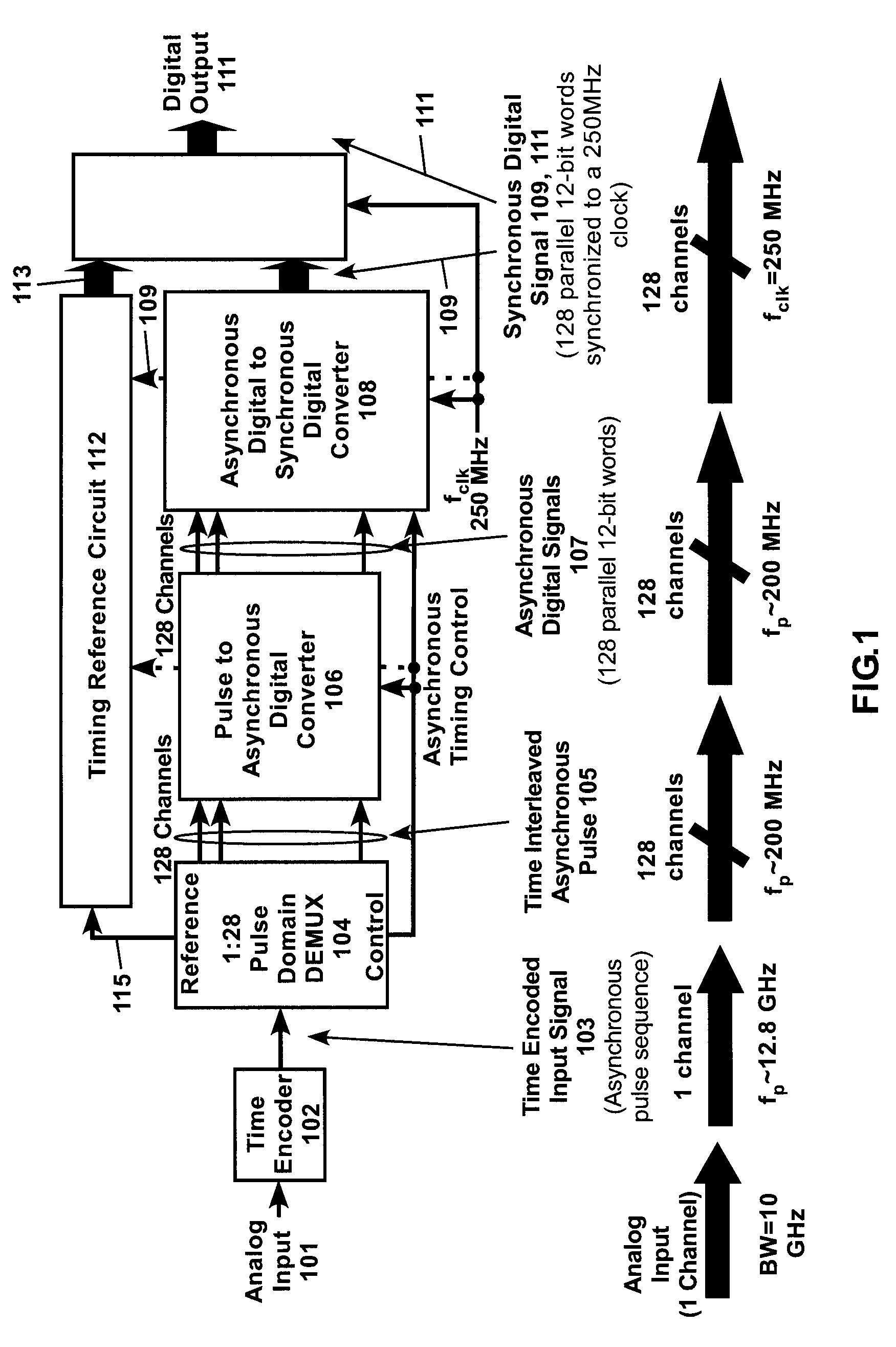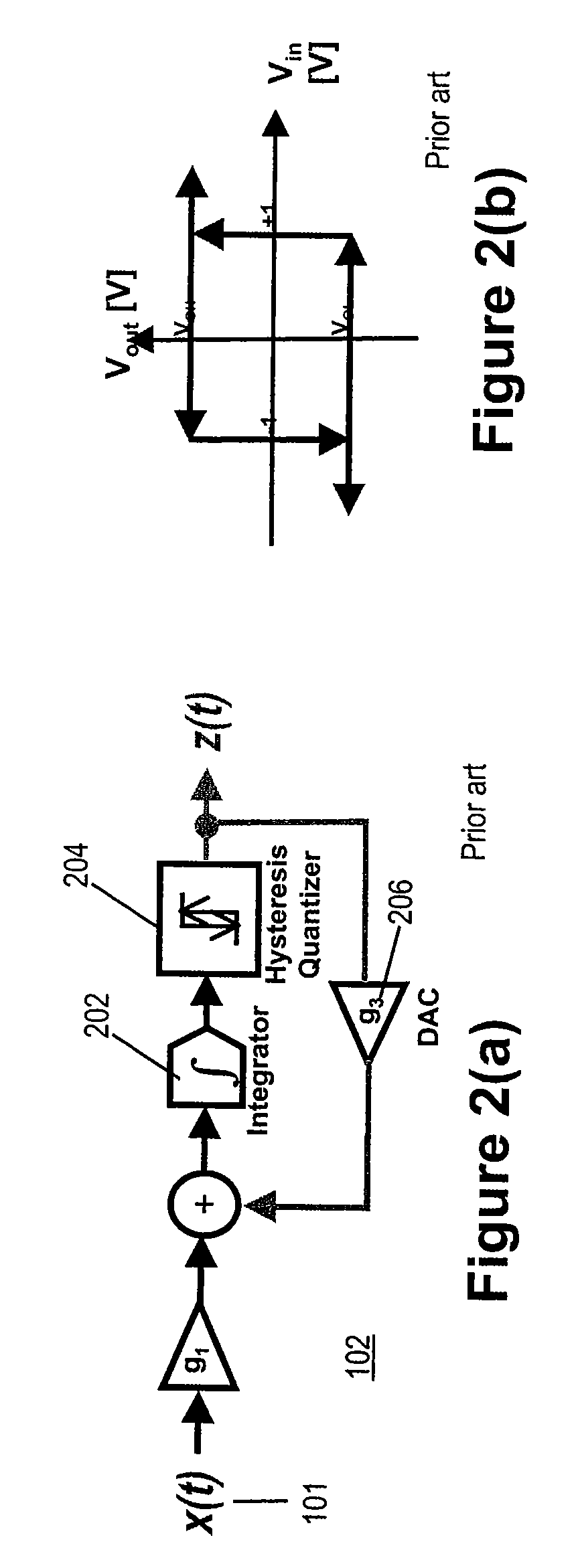Analog to digital converter using asynchronous pulse technology
a technology of analog-to-digital converter and asynchronous pulse, which is applied in the direction of code conversion, transmission system, instruments, etc., can solve the problems of no paper can study the transformation from analog to pulse domain and back, and no attempt to build an analog-to-digital converter
- Summary
- Abstract
- Description
- Claims
- Application Information
AI Technical Summary
Benefits of technology
Problems solved by technology
Method used
Image
Examples
Embodiment Construction
[0027]FIG. 1 shows an embodiment of the Analog-To-Digital Converter (ADC) Architecture 100 of the invention. The ADC architecture is composed of the following six elements: a time encoder 102; a pulse-domain demultiplexer 104; a pulse to asynchronous digital converter 106; an asynchronous digital to synchronous digital converter 108; a digital signal processor 110; and a timing reference circuit 112.
[0028]The time encoder 102 converts analog input data 101 into pulse data at its output. A pulse domain demultiplexer 104 has one input data channel and multiple (128 in this embodiment) parallel output data channels 105 which contain time interleaved asynchronous pulses representative of the analog input data 101.
[0029]A pulse to asynchronous digital converter 106 digitizes data in each of the parallel data channels from the pulse domain demultiplexer 104 into, in this embodiment, 12-bit words in each of the 128 channels. An asynchronous digital to synchronous digital converter 108 conv...
PUM
 Login to View More
Login to View More Abstract
Description
Claims
Application Information
 Login to View More
Login to View More - R&D
- Intellectual Property
- Life Sciences
- Materials
- Tech Scout
- Unparalleled Data Quality
- Higher Quality Content
- 60% Fewer Hallucinations
Browse by: Latest US Patents, China's latest patents, Technical Efficacy Thesaurus, Application Domain, Technology Topic, Popular Technical Reports.
© 2025 PatSnap. All rights reserved.Legal|Privacy policy|Modern Slavery Act Transparency Statement|Sitemap|About US| Contact US: help@patsnap.com



